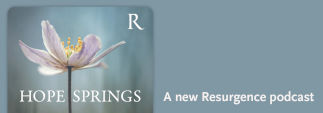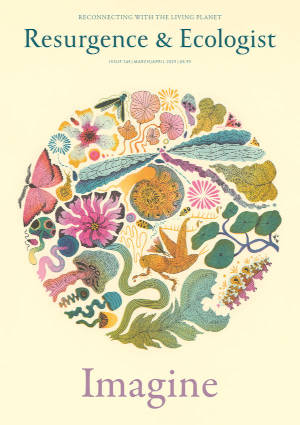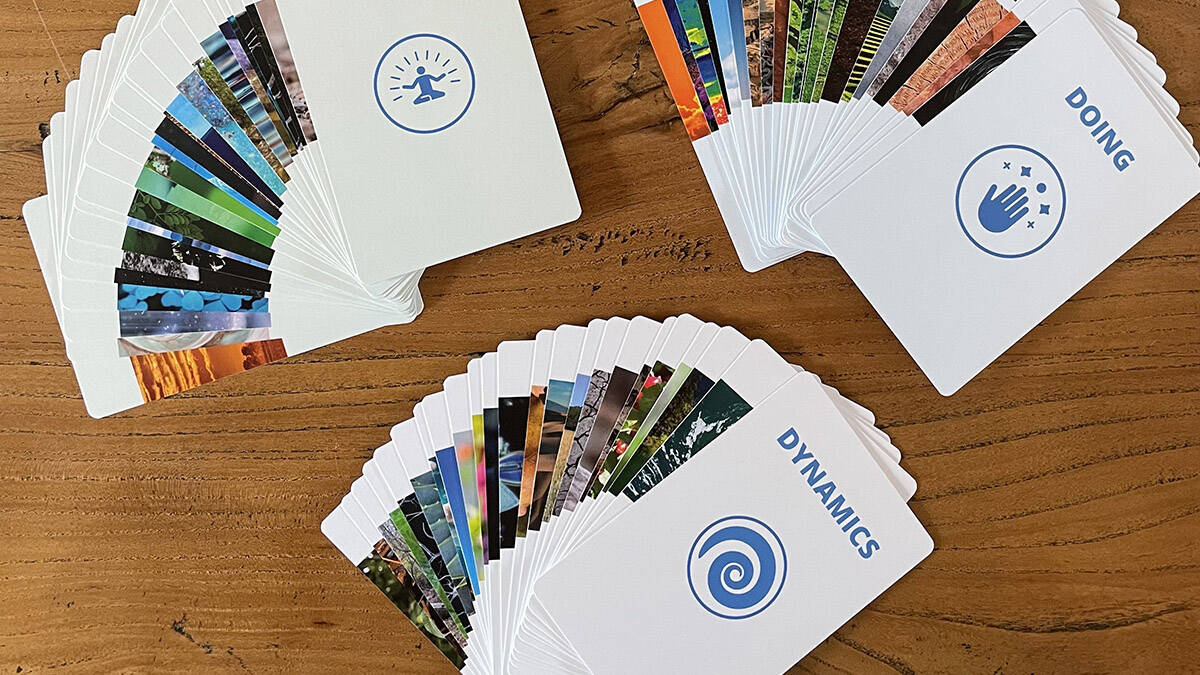I grew up free range on a smallholding in southern Ireland and then among the orchards and levels of England’s west country, where I had been born. Freedom to roam, imagine and play with more than just human companions was my gift. It was in that rich soil of my youth that I was hit with a thunderbolt. I remember playing in the sandpit as my father humorously asked, “What are we all doing here, Thomas? What does it mean? What’s it all for?” His direct question went to my core and set me up for a life of passionate curiosity and wild learning.
I find manual work excellent for thinking, and thanks to my upbringing I was engaged in practical chores from a young age, stacking logs and tending animals, and handy of course with the tools of smallholding, country life. Carrying these big existential questions as I worked and played cultivated an earnest seeking of knowledge about the world and a passion for the novel and new.
This self-willed hunger for learning and discovery was not well nurtured at school. It’s not an uncommon story. I wanted to follow my delight and fascination off-track from the rarely nourishing curriculum. As my own studies outside of school deepened, reading widely through my teens, I became increasingly argumentative and difficult to domesticate (unwild) into the school system. I remember feeling indignation about lost opportunities for learning, suffocated by the dull structures of the classroom and its prescribed materials. Teachers excused me from classes. Too tired to argue, they gave up in my last year at secondary school and I naturally found my way into building work.
“Do I treat you like you know what you’re doing, or like an idiot?” I was asked in a matter-of-fact way by my first mentor. “Like an idiot, I guess,” I replied, as I didn’t yet know the work of construction. I discovered that you learn by trial and error, through practising and testing, honing intuition and sourcing your own intelligence.
I found that building sites were good places for philosophical enquiry too. There was a kind of free and independent thought to be found there. The flow state of repetitive tasks and the backdrop of green and pleasant countryside offered an incubator for my wild learning. I read relentlessly alongside learning the trades of restoration, stone masonry, lime plaster, cob and timber frames. These occupied my hands while my mind was free to soar and dive through fact and fiction. One book would lead to another and I found myself with no plan, but just intuition and passion guiding a piecemeal mapping of philosophy, history and science. I began to see territories tessellate, lineages of thought weave and furl, reappearing references inviting even deeper dives.
As my organic studies matured, I longed for spaces to share ideas in, to process the revelatory discoveries of quantum science, cosmology and the painful planetary health crisis I was learning about. I didn’t know if I could or even how I would re-enter the education system. The outlet I did have was expressing the ideas I digested through poetry and hip hop, cultivating my own spoken style, rhythmic and rhyming, colourful patchworks of philosophical enquiry.
This creative art form led me by a crooked path into the UK festival scene, where I founded a platform for discussion and debate, creating that space for discourse I had longed for. Building skills helped to construct the festivals, and then on show days I would switch hats to host a venue called The Forum. I remember the year TED talks shifted from fringe interest to a mainstream phenomenon and with that a surge of interest. Producing talks at events was a wave I rode to meet many heroes, authors, thought leaders and pioneering people.
The big questions I still carried – questions like ‘What are we doing here?’ and ‘What’s it all for?’ – were becoming more detailed and more specific. ‘What is the role of our species at this time? How do we shape ourselves and our purpose? What does our history tell us, and what futures do we imagine?’
I often felt like an outsider – a builder among intellectuals, an intellectual among tradespeople, a poet but as researcher, parochial in the city, seasonally part of the festival scene. Yet it felt good to be weaving between spaces, following my instinct, and I knew this diversity was important. I felt like I was gathering experience for a future I couldn’t see, both my own and for the wider world.
After some years of convening public discussion spaces, and with a growing awareness of the urgent need for sustainability, my work had matured into consulting in the built environment. I had found some practices to ground and guide my work, training in NLP for facilitation and a coaching approach, permaculture for a systemic sensibility, and ecolinguistics for life-centred language. I founded my company Pale Blue, the name inspired by Carl Sagan’s famous speech ‘The Pale Blue Dot’. This inclusive view of all life, of Gaia, became the emblem for the story I wanted to serve, the story of planetary health and our human role within it.
I had language for relating to both inner and outer ecosystems and was becoming fascinated about where they meet. Being an autodidact, I was happy to embark on the learning journey of creating a consulting business and knew that I would find my way through experience and practice as I had done before.
The mysterious birth of Cards for Life
Cards for Life is a deck of 72 cards in three sets – Dynamics, Being and Doing – which can be combined for helping people connect inner and outer Nature. How they came through me still feels somewhat mysterious. A friend had passed me a document of a seemingly unfinished design for permaculture flash cards. I had just finished my design certificate in permaculture and was seeking to integrate the principles.
These were principles such as ‘observe and interact’, ‘catch and store energy’, and ‘obtain a yield and accept feedback’. It all felt so rich and widely applicable, but there was still something about permaculture that was somehow aesthetically unappealing to many outside the green movement. I began wondering how these ideas could also be decoupled from the politicised concepts of climate and environment to simply explore how we are Nature and how that can serve us in this time.
The inspiration had finally arrived to work with these principles in some way. Out of curiosity I asked my friend where she had got these designs for permaculture cards, but she had no recollection of our exchange at all! I searched our message threads and found no trace of the exchange or attachment anywhere, so the physical birth of the cards remains a mystery still.
At the end of an intense two-year period of work in the greenhouse gas removal sector I was left feeling there was a need for a more systemic vocabulary, a clearer connection between inner motivations and outer work, and that the principles of Nature could support these efforts. I joined the Bio-Leadership Project in 2022 to reconnect with my Pale Blue mission and began tinkering with a design for some cards as something to help me integrate the learning journey ahead. I met so many kindred spirits and inspiring speakers that it was in this fertile ground that the project germinated.
I saw that permaculture principles could be usefully broken down into the more fundamental key concepts of complexity science and systems thinking. With the inspiration to match every concept to a visual metaphor and pair it with generative questions on the back of the card, I had a design of sorts. From my years of wild learning, finding my own way and following my interest guided by concerns for our future as a species among this miraculous emergence of life, I finally had a place to order my collected ideas and a system to combine and synthesise them.
Once the Dynamics cards came together, I realised there was another synthesis wanting to happen. It was more to do with the self and how we’re ‘being’ than with living systems concepts, and so the Being cards were born, followed swiftly by the Doing set. The Being cards reference stage theories like Frederic Laloux’s Teal organisations with ‘sense and respond’ as well as perennial spiritual principles such as compassion and gratitude, with discomfort in there for good perturbation. The Doing set offers a wide array of all the amazing work we see, from rewilding to biomimicry, from circling practice to attuning to seasons and cycles. Christiana Figueres said, “When there is a convergence of crises, like we have now, there needs to be a convergence of solutions.”
The vision
In a beautifully autopoietic way the Cards for Life have nurtured their own growth, developing with the seasons and offering support to their steward. They encourage iteration, feedback and growing outwards, improving their conditions like a living system rather than something designed and completed in isolation and then inserted into the world. They know how to grow responsively, to find opportunity and create serendipity. Many of the cards were born through conversations with inspiring thinkers where an idea crystallised. I remember meeting the philosopher, writer and activist Bayo Akomolafe in a Bio-Leadership session, and the Discomfort card came through very clearly.
After printing a single prototype of the cards, I gingerly shared the deck with some friends and colleagues to test the four exercises I had designed. The first is a Personal Inquiry practice, then there is a Being Circle for group connection, an observational practice called Seeing Systems, and a Regenerative Vision exercise to map a project with actionable steps. They seemed to work, so my next step was to produce a beta version.
I found a printer that could produce them with full integrity, using green energy, natural inks and compostable materials. Naturally, they had to be expressions of their own values. Investment and borrowing from the future didn’t feel aligned, so I managed to secure a number of pre-sales from people drawn to this experiment. Fifty packs arrived and I curled up in a ball! I had spent eight months entranced, seeking, gathering, writing and breathing life into these concepts, unfolding them into questions, and now they would be rejected or accepted by others. I dug deep and set about posting them to around twenty first adopters in 14 different countries. Everyone was invited to a messaging group to share their practices and experiments with the cards – and they were so well received! I doggedly sought feedback after sharing the fruits of that first labour in autumn 2022 and took the winter to integrate it, deepening the soil and expanding on each card by drafting a companion book called Thinking Like Gaia.
The first full version of the cards arrived in the spring of 2023 thanks to the sponsorship of two organisational adopters. Since then they’ve opened up countless valuable conversations and insights in both dedicated workshops and one-to-one sessions. There is a burgeoning global community of practitioners, with complete translations into Spanish, Portuguese, French, Chinese and even into Urdu under way.
Throughout 2024 I realised that the next stage of the project would be a course to support a deeper dive into practice and facilitation. Like many coaches and consultants using them to support the work of life-aligned leadership and culture change, I am supporting their adoption into Nature-led organisations in the UK, including Wildlife Trusts and the Eden Project, paving the way for other businesses to share in this new approach to innovation.
Living systems
The vision is that the cards as a living system themselves offer a shared vocabulary – one that is life-centred and complexity-informed – for individual practitioners, communities and teams to learn together, sharing across networks how they’re embedding these principles in policies, processes and behaviours.
One person applied the ‘Impermanence’ card to a work situation where they had inherited outdated interview processes. They found that it deconflicted an otherwise adversarial situation by offering a reframe – every year the process could go through its own renewal where some elements would naturally fall away and make space for the new. Another realised with the ‘Spiral time’ card that he was pushing his organisation in only a linear way, and while that was needed, he found he was missing many opportunities for cyclical improvement that could build year on year at both the personal and the collective level. One woman found that the ‘Seasons & cycles’ card created the opportunity for a conversation about menstrual leave with the team. The language of Cards for Life supports a better quality of connection, often offering ‘permissions slips’ for what the system wants to process.
I recently read Carol Sanford’s words on two contrasting theories of knowledge: ‘external authority’ and the ‘sourcing mind’. This language really landed with me, and I realised that the sourcing mind approach is a wilder form of learning that cultivates agency and self-will.
Something that distinguishes emergent living systems from mechanical designed ones is that living systems contain within themselves everything they need for their own renewal and evolution. Often people meet the cards and are confronted with their own agency, their own will, their own wildness. Industrial education has so deeply conditioned us to be filled with knowledge by an external authority rather than source our own innate intelligence and insight from within. These cards cultivate the sourcing mind with the idea that as living systems ourselves we have an innate and profoundly deep understanding of life’s complexity because we are Nature.
This faculty to be self-willed and wild in our learning feels crucial to navigating the complex challenges and transitions ahead. I feel we must learn in a more wild way now, following our intuition, proceeding iteratively, experimenting and sourcing the myriad ways we need to reconnect with the community of life to restore and protect the life of Earth.
Cards for Life
• Cards for Life launched in April 2023
• They are currently being used in over 36 countries
• More than 80 people have now completed the facilitator training in 2024 with well over 200 practitioners in a shared practice group
• Anyone can sign up for a course and a train the trainers course begins in 2025
• Tom Mansfield works with individuals and teams through bespoke training, coaching and consulting
The vision is to redefine innovation by helping to grow that capacity within organisations and through a platform for inter-organisational learning. Supporting the emergence of life-centred policies, processes and new patterns of behaviour with a common regenerative vocabulary.
You can hear Christiana Figueres, an internationally recognised leader on global climate challenges, speaking with host Annabel Heseltine on the Hope Springs Resurgence podcast. tinyurl.com/hope-springs
Cards for Life are available in the Resurgence online shop.








